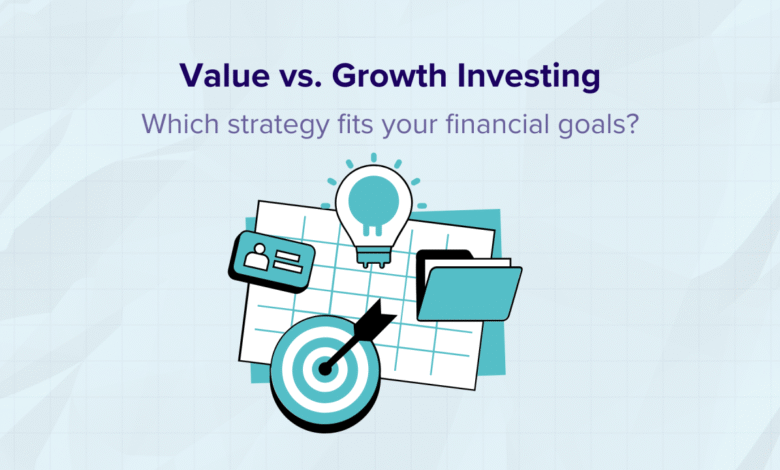Growth vs. Value Stocks: Which One Suits Your Investment Style?

When stepping into the world of investing, one of the first decisions you’ll encounter is choosing between growth and value stocks. Each represents a distinct approach to investing, with different philosophies, financial metrics, and risk-reward tradeoffs. Understanding the core differences between these strategies is essential for anyone looking to align their investments with their financial goals, time horizon, and tolerance for risk. In this article, we’ll explore what defines growth and value stocks, how they perform in various market environments, and how you can determine which strategy best fits your investment style.
Understanding Growth Stocks
Growth stocks are typically associated with companies that are expected to increase their revenues and earnings at a faster pace than the broader market. These companies often reinvest their profits to fuel future expansion, meaning they rarely pay dividends. Investors are drawn to growth stocks because of their potential for substantial capital appreciation over time.
These stocks are usually found in innovative and fast-changing industries like technology, healthcare, and consumer services. Think of companies involved in cloud computing, electric vehicles, or artificial intelligence. They may not yet be profitable, but their sales figures and market potential paint a compelling picture.
While the allure of high returns can be tempting, it comes with heightened volatility. Growth stocks tend to be more sensitive to changes in interest rates and investor sentiment. When market conditions are favourable, they can soar, but in downturns, they often experience sharper declines. Discover more to get started today.
Understanding Value Stocks
Value stocks, on the other hand, belong to companies that appear to be undervalued relative to their intrinsic worth. These companies often have solid fundamentals, such as strong earnings, stable cash flow, and established market presence. Yet, for one reason or another—be it recent underperformance, sector decline, or macroeconomic headwinds—their stock prices are lower than what many analysts believe they should be.
Investors who buy value stocks believe the market has overreacted to short-term issues and that prices will rebound over time. These stocks are commonly found in mature industries like finance, utilities, manufacturing, and consumer staples. They frequently pay dividends, making them attractive to income-focused investors.
The primary appeal of value stocks lies in their perceived margin of safety. Since they are already trading at discounted prices, they may offer more stability during market downturns. However, value investing also carries risks. Sometimes, a stock is cheap for good reason. These so-called “value traps” can mislead investors into buying companies that continue to struggle or decline.
Key Metrics to Compare Growth and Value Stocks
Evaluating growth and value stocks requires understanding different sets of financial metrics. Growth investors pay close attention to the earnings growth rate, revenue trends, and forward-looking indicators. They are often willing to accept higher Price-to-Earnings (P/E) and Price-to-Book (P/B) ratios because they expect the company’s earnings to grow rapidly in the future.
Value investors, in contrast, seek stocks with low P/E and P/B ratios relative to their peers or historical averages. Dividend yield also plays a more prominent role in their analysis. They often look at a company’s balance sheet strength and free cash flow to ensure long-term sustainability.
Another important factor is volatility, often measured by beta. Growth stocks tend to have a higher beta, meaning they are more volatile than the overall market. Value stocks typically show lower beta, offering potentially less risk in turbulent times.
Historical Performance Comparison
History shows that both growth and value stocks have their moments of outperformance, depending heavily on the economic cycle. Growth stocks tend to shine during periods of low interest rates, strong consumer confidence, and robust economic expansion. For example, the 2010s, especially the latter half, were a golden era for growth investing, powered by a tech boom and cheap borrowing costs.
Conversely, value stocks have traditionally performed better during economic recoveries and periods of rising interest rates. The early 2000s saw value investing outperform after the dot-com bubble burst. Similarly, during inflationary periods or when monetary policy tightens, value stocks may provide a more stable ride.
Risk and Return Profiles
When evaluating investment strategies, it’s crucial to consider the tradeoff between risk and return. Growth stocks offer the potential for high returns but come with increased volatility. A bad earnings report, a shift in investor sentiment, or unfavourable policy changes can lead to rapid declines in share price.
Value stocks may provide a more conservative approach, often yielding smaller but steadier gains over time. Their prices are already discounted, so there’s a perceived cushion against major losses. However, the risk here lies in stagnation. If the market doesn’t recognise the stock’s potential or if the company continues to underperform, gains may never materialise.
Conclusion
Choosing between growth and value stocks isn’t a binary decision—it’s about finding what fits best with your personal goals, risk tolerance, and investment horizon. Growth stocks can offer thrilling upside potential, while value stocks can provide a stable foundation and reliable income. Rather than asking which is better, a more productive question is: Which approach aligns best with your long-term financial strategy? Once you answer that, you’ll be well on your way to building a portfolio that not only suits your style but also stands the test of time.



